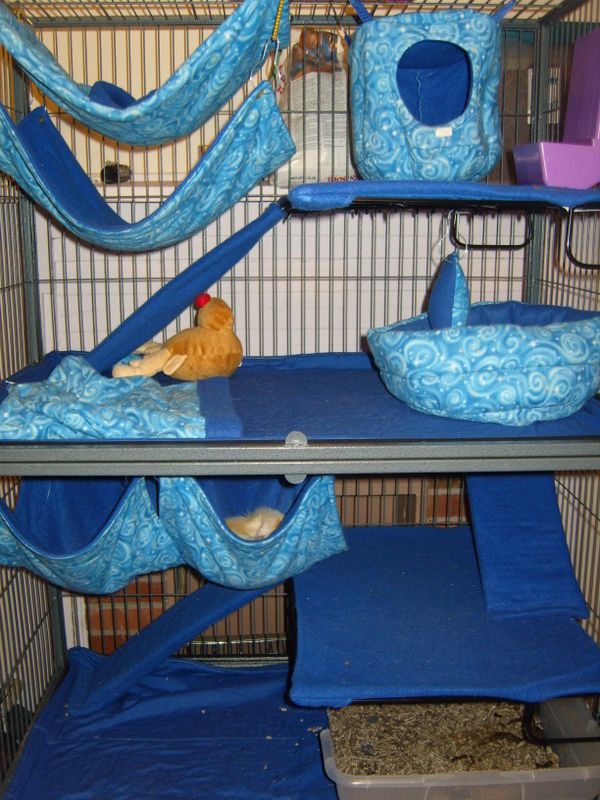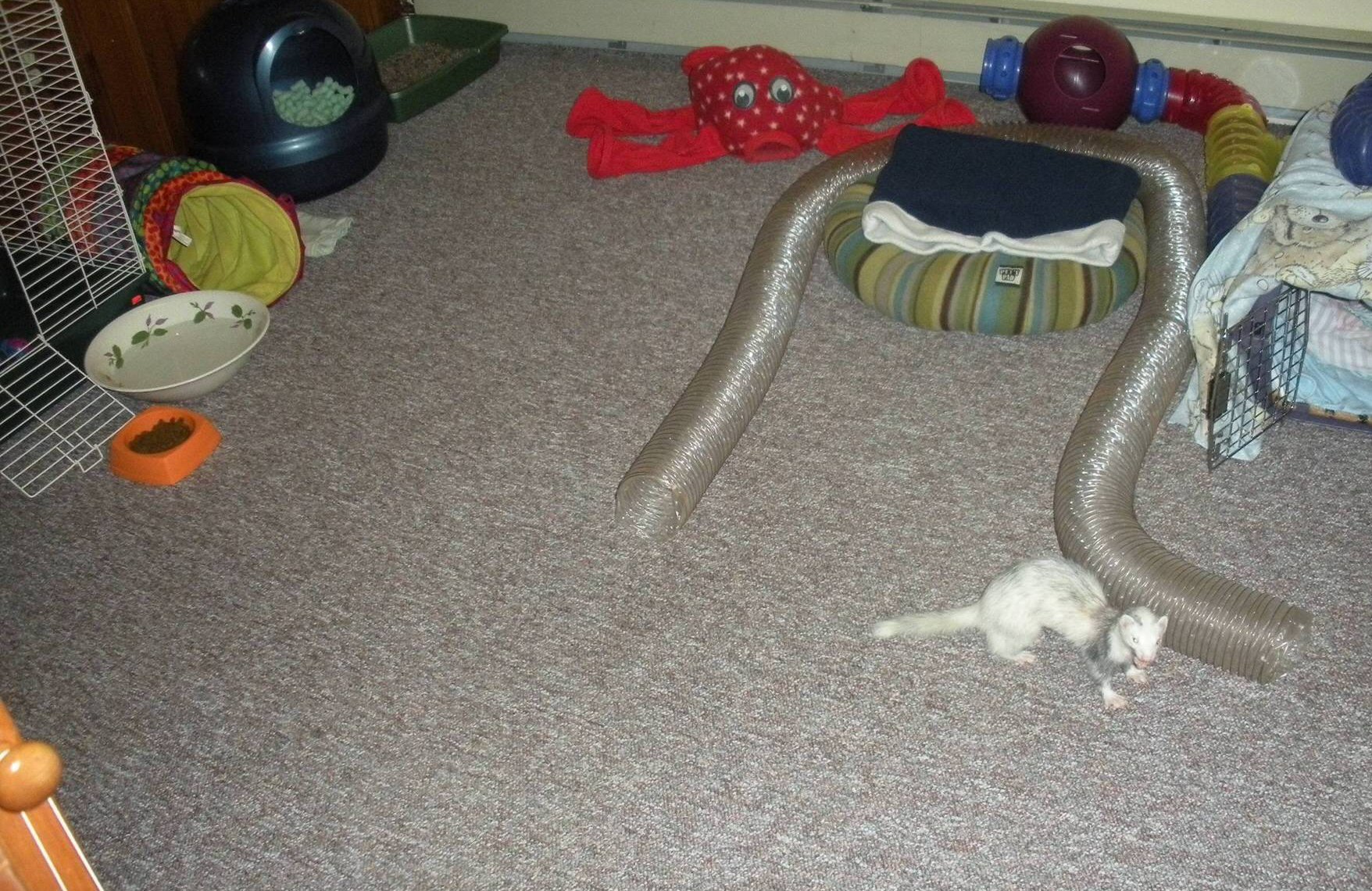Cages


Ferrets should spend their 'unsupervised' time in a cage or a 'ferret proof' room. This means that they don't have access to items they can chew and choke on, get stuck in or holes in the wall they can get into. If their head fits, they'll get into it. See the play and enrichment section for more information. They can spend several hours per day in their cage, but must get at least 2 to 4 hours of supervised active play outside of their cage each day. Typically, litter boxes are placed at the lowest level of the cage, bedding is placed at the highest level of the cage and food/water is placed in the center level or on the bedding level if you only have a two level cage. Litter boxes and food/water should NOT be on the same level. Ferrets do not like to eat where they relieve themselves. Size of cage varies depending on how many ferrets you have. One ferret would be comfortable in a two level cage, but if you have multiple ferrets, you should get at least a three level cage with multiple bedding options.
Sleep
Ferrets typically sleep 18-20 hours per day. They need complete (or as complete as possible) darkness while they sleep. Choose sleepers that ferrets can climb into to help block out light. Ferrets like to cuddle together while sleeping so purchase sleepers that are big enough to accommodate your ferrets. The most popular sleepers are hanging cubes or pouches. LFFR makes really sturdy cubes and pouches that will last you a while.
Food
Ferret food should contain 34-38% protein and the first ingredient should be meat. The ferrets should have access to food throughout the day. Ferrets often tip food containers over, so make sure that it is in a bowl that is too heavy to tip or one that secures to the side of the cage.
The Ferret Store online produces a high quality food that I use for my ferrets. I mix The Ferret Store brand with Totally Ferret brand chow. Click on the picture below to go to their site.![]()
Water
Ferrets need fresh water daily. Water can be provided in a water bottle that hangs on the cage or in an open bowl. Ferrets tend to drink more water when it is served in on open bowl but the bottles are less messy.
Litter
Ferrets can be littered trained, but it takes a lot of work. They like to go in corners, so that's the best place for boxes. Ferrets often go to the bathroom soon after waking up. If litter training, you can corner them in a litter box until they go or air lift them into the box when you see them start backing into a corner. Also, ferrets tend to have 'favorite' corners to relieve themselves in, so it's best to place boxes in their preferred areas.
Keep litter boxes clean, ferrets do not like to go in a dirty box. Do not use litters that are made of clay or other high dust products because it can clog their nasal passages. It's best to use recycled newspaper or other non-clay litters.
Vet Visits and General Health
Ferrets should be taken for annual check ups to a veterinarian with experience working with ferrets. Ferrets must also be vaccinated for canine distemper and rabies yearly. Most ferrets are descented and neutered/spayed when you adopt them. Descenting reduces odor of ferrets while neutering/spaying eliminates the possibility of breeding and overpopulation. Ferrets can be given Ferretone as a supplement sparingly to increase coat shine. Also, a very small amount of edible laxative that is approved for cats can be given once monthly in order to ensure proper digestive movement (ferrets tend to swallow things they shouldn't).
Ear cleaning and nail trimming
Ears should be cleaned every other week with a solution specially designed to clean ferret ears and nails should be cut every other week as well. If nails are not kept trimmed, they can get caught on carpet, fabric and other materials and cause broken toes. When ferrets get stuck, they do an alligator roll which often causes more damage.
Avoid heatstroke
Always remember to keep your ferret out of the heat. Temperatures above 80 degrees Fahrenheit are uncomfortable for ferrets, temperatures above 85 can cause medical problems within hours, and temperatures above 90 can be fatal. To avoid heat stress, keep your ferret in an air-conditioned room, away from direct sunlight.
Transporting Ferrets
In order to transport ferrets a cat carrier should be used. Leashes are made for ferrets, but many ferrets can escape from them.
Home
Enrichment
Behavior
Mojo's Story